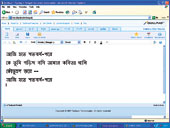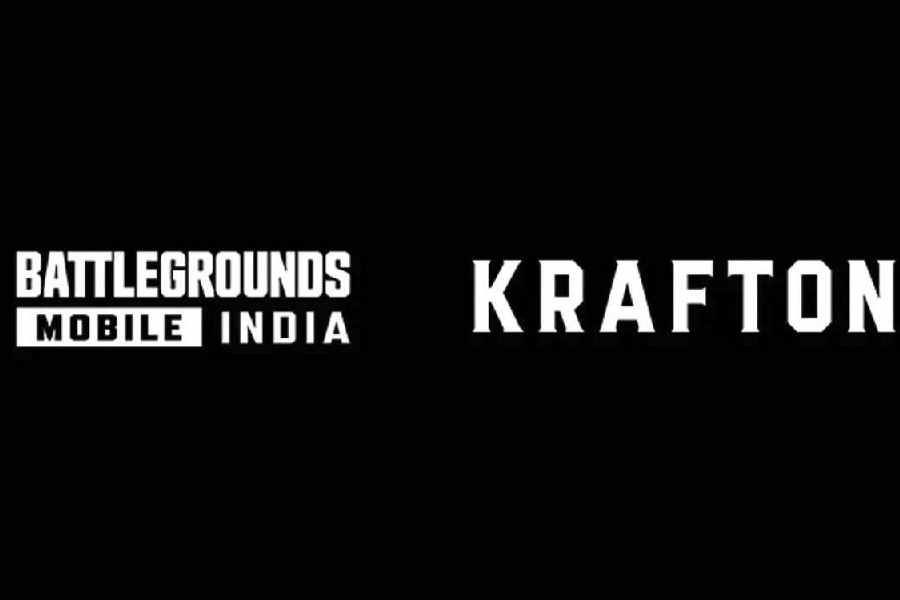 |
 |
| Ram Prakash and quillpad.in (top) |
Personal correspondence first got abbreviated from letters to emails. And later on to chat and SMSes. The more intimate and instant personal correspondence got, the more popular became the use of vernacular typed in English.
There is no denying the fact that whether one is proficient in English or not, most Indians prefer to communicate, flirt, scold, or order in their own mother tongue. Imagine the joy of letting loose a series of expletives to a friend in the language you have spoken in since in the cradle!
With technology mostly being driven from the West, there has been very little effort to develop software for the Language of the Gods — Devanagari. Hindi, Bengali, and most of our Indian languages are widely classified under Devanagari and Indic scripts. Despite some feeble attempts at research into these scripts, Silicon Valley (until recently) hasn’t really bothered to understand the vast multihued linguistic landscape that is India.
India did not even exist under the drop down list of countries when I first tried to create a Netscape email account in the early days of the World Wide Web, although Indian engineers were quietly making their mark, in the start-up companies of Silicon Valley.
It was only with Windows XP Service Pack 2 that one could type in Indian languages. Apple’s OS X Leopard’s support for Indian languages is sketchy at best. Linux, on the other hand, is good.
That is why the Unicode Consortium, a non-profit organisation, was formed to develop, extend and promote use of the Unicode Standard, whereby all the languages of the world would be supported in any modern software developed by any technology company, no matter what the platform, program or language. Most technology giants like Microsoft, Apple and Adobe claim that their products are Unicode compliant. The truth is, barring Microsoft, languages from India or the Indic scripts have not been properly implemented by any of these companies.
Try writing in Bengali or Malayalam or Kannada in Photoshop, or even in Apple’s much-touted iWork ’09 and you’ll know what I mean. Only Microsoft Office on Windows has adhered to Unicode standards and properly supports Indian languages. But typing in Word or Notepad can be quite a challenge if you do not know the keyboard layout — where the alphabets and vowels are placed in the language of your choice.
Amidst this depressing scenario Indian tech firms came out with a solution called transliteration. All of you must be familiar with this practice. You type in English and a word appears in the language of your choice. But this too was a challenge because you had to spell a Hindi, Bengali or Malayalam word in English in a specific way to get the right spelling in the Indian language.
So along comes Mr Ram Prakash, an IIT graduate from Chennai, with a better transliteration technology. He strongly believes that his father or grandmother should not be forced to learn a new keyboard layout. So he, along with his team of engineers at Tachyon Technologies, developed Quillpad.
Go to http://quillpad.in and choose the language you want to write in. My first experience was amazing to say the least. I chose Bengali and typed at will. I was surprised that the two sentences I typed came out with almost 90 per cent accuracy. Mr Ram Prakash has used artificial intelligence for his transliteration technology. So it really does not matter how you type your Bengali word in English. For instance, you could write “ananda” or “anand” and you will be presented with a choice of the correct spelling in Bengali.
It is like typing English on a mobile phone with predictive text or T9. No wonder, Quillpad is ideally suited for the mobile environment. Prakash is working to incorporate his writing pad into Nokia and LG phones so that users can send SMSes, and even chat, in their chosen language. In fact, Quillpad will work on any phone that runs on the Symbian operating system or Java. BlackBerries and the iPhone are not in his horizon yet.
Quillpad supports Bengali, Gujarati, Hindi, Kannada, Malayalam, Marathi, Nepali, Punjabi, Tamil and Telugu. It works best with Internet Explorer and Firefox. Also, you must have Indian languages enabled from the Regional Settings in the Control panel. You will find the instructions for it on the Quillpad site under Faq. You can even copy/ paste to Word and Notepad from there.
Google too has transliteration for Indic scripts. It is still in the laboratory being tested. The link is http://www.google.co.in/transliterate/indic#. But it has only Hindi, Malayalam, Kannada, Tamil and Telugu — and it is not half as good as Quillpad. For once an Indian company has beaten Google.
To entice users Mr Ram Prakash has added email in his Quillpad. So you can email your friends from the site itself. Just make sure they too have enabled Indian languages in Windows XP or Vista.
And those of you who cannot write in your mother tongue (or, for that matter, any other language that you speak fluently), here’s the chance. Use it to silence your critics.
Send in your computer- related problems to askdoss@abpmail.com. The solutions will appear soon.











